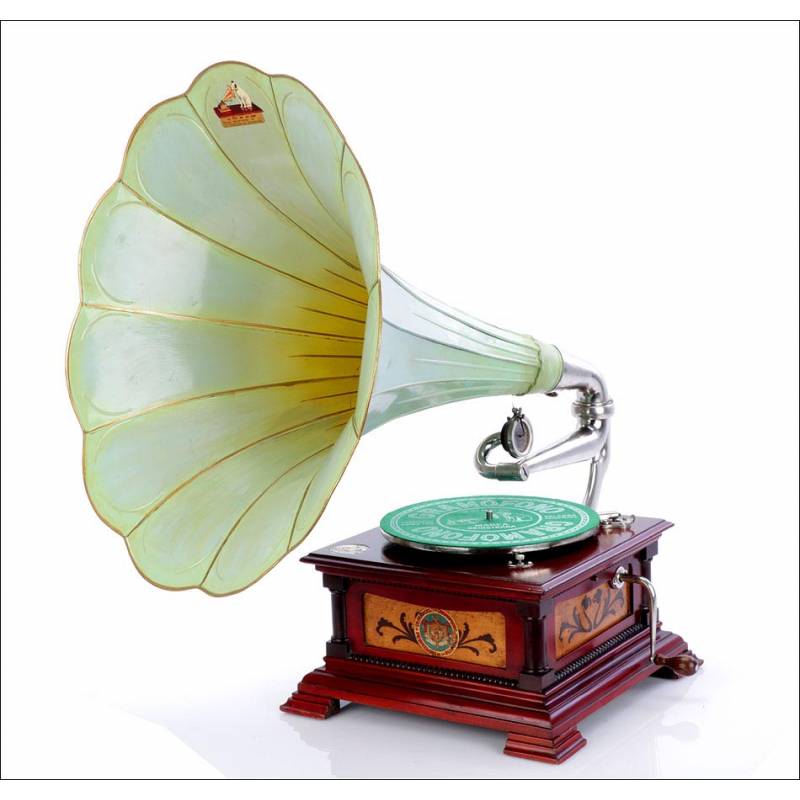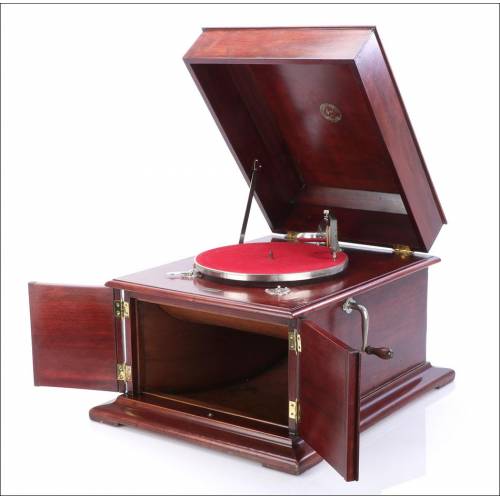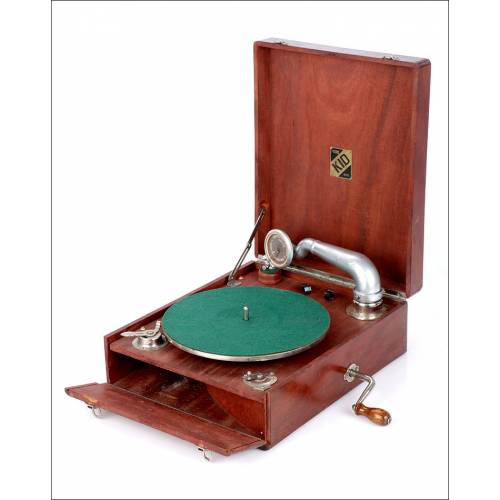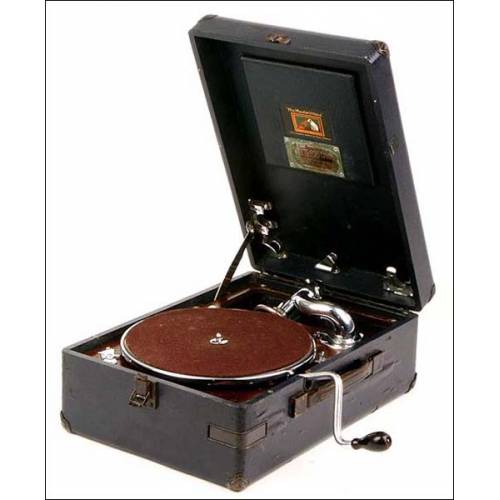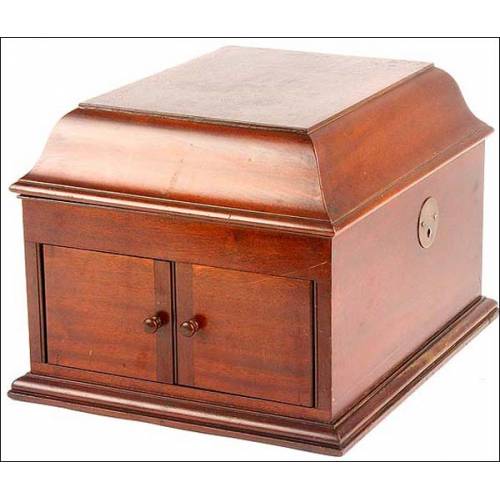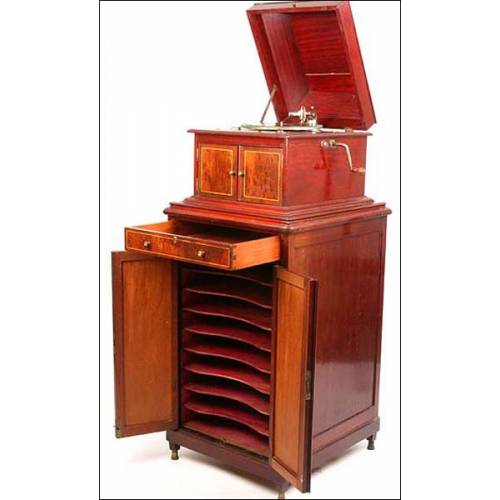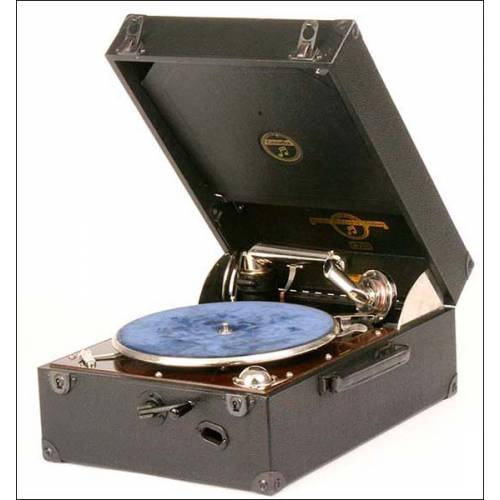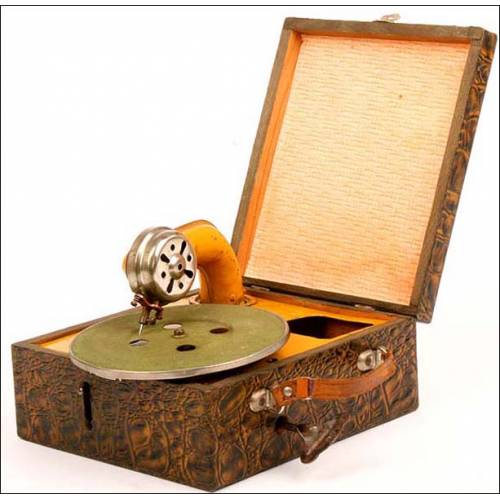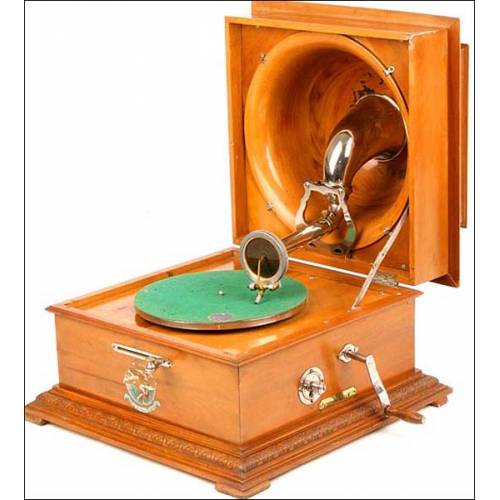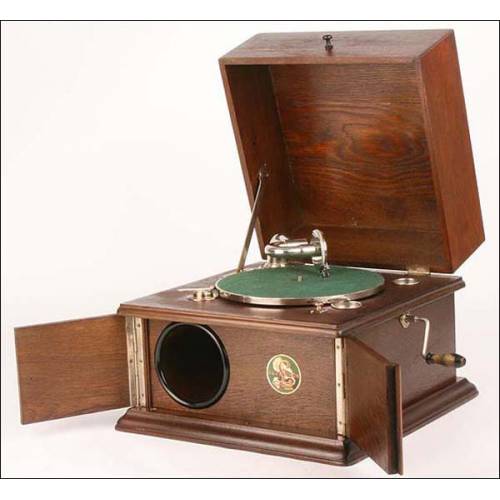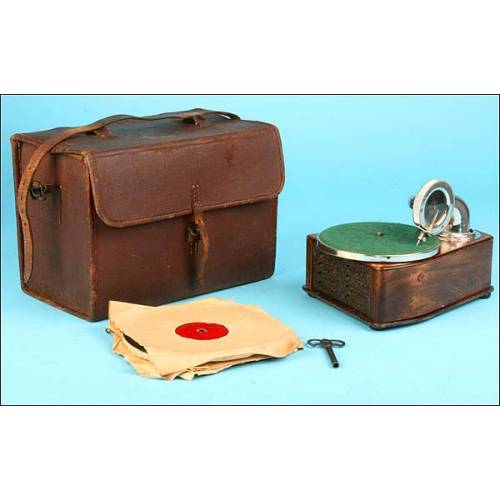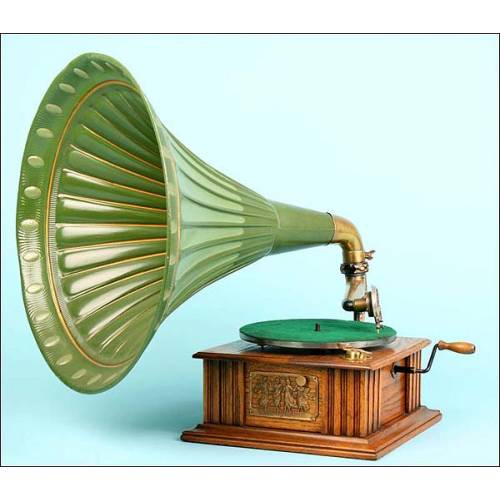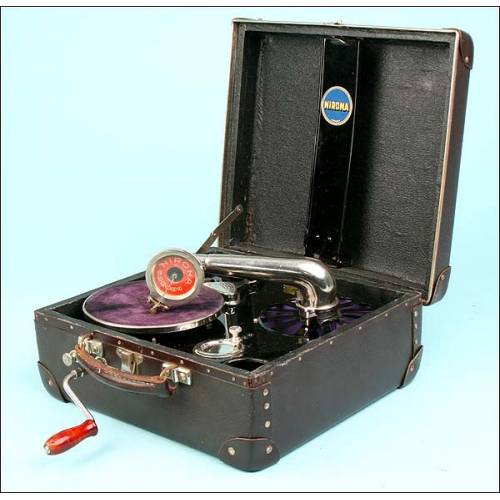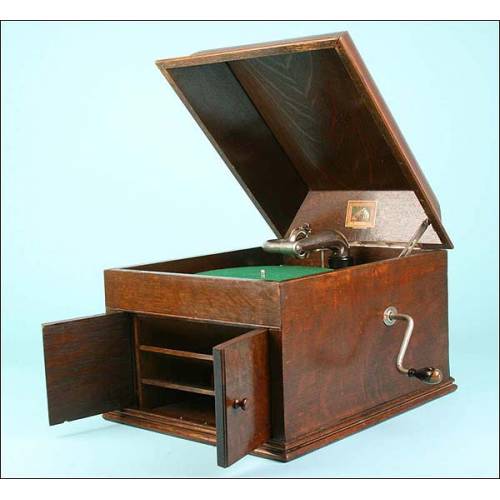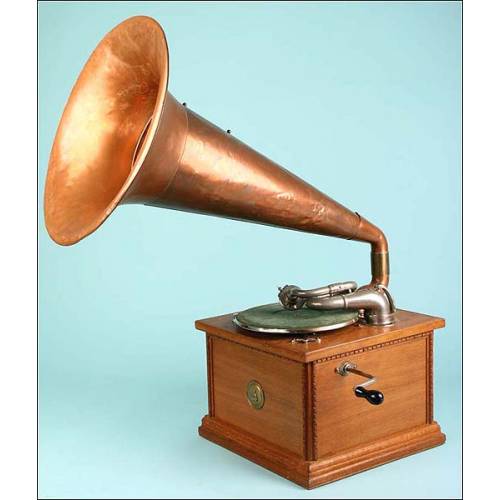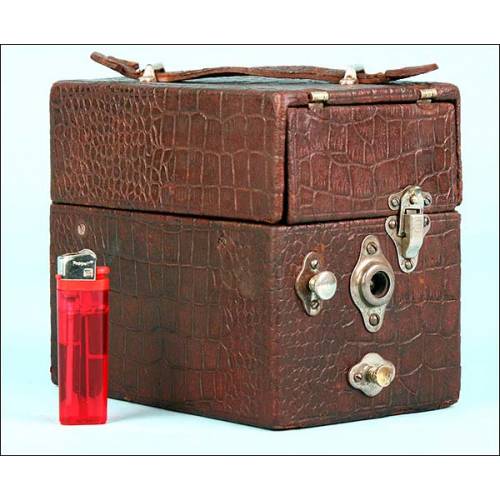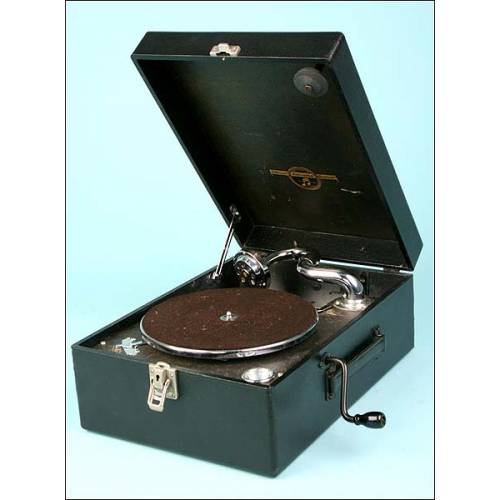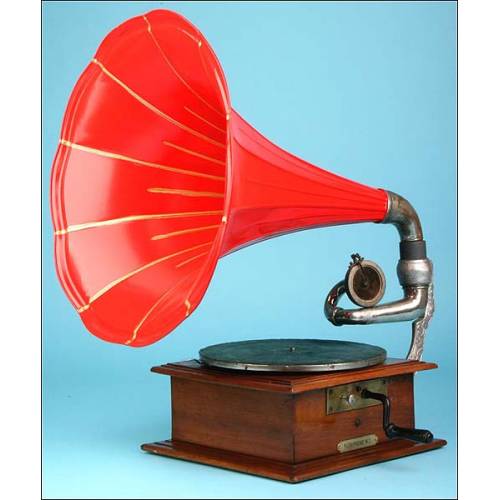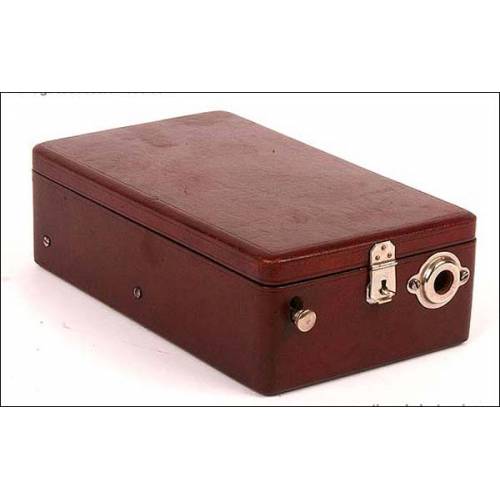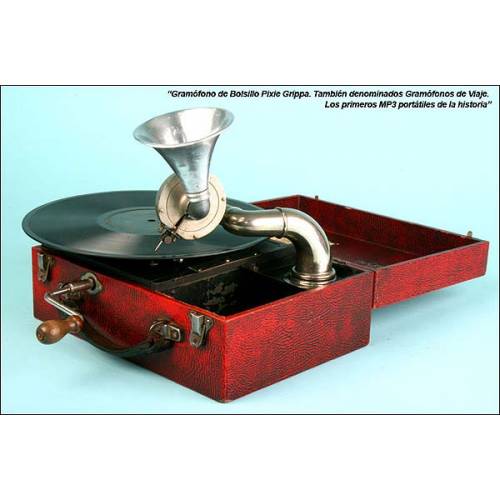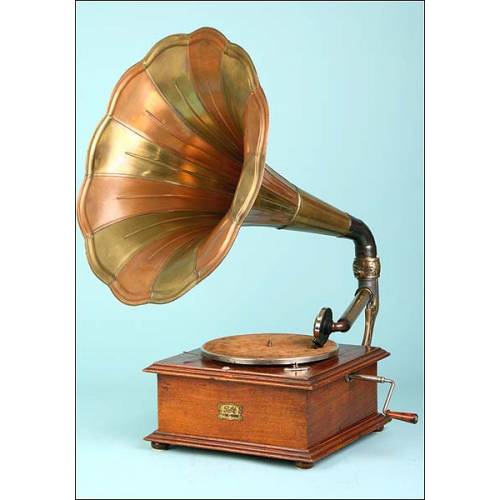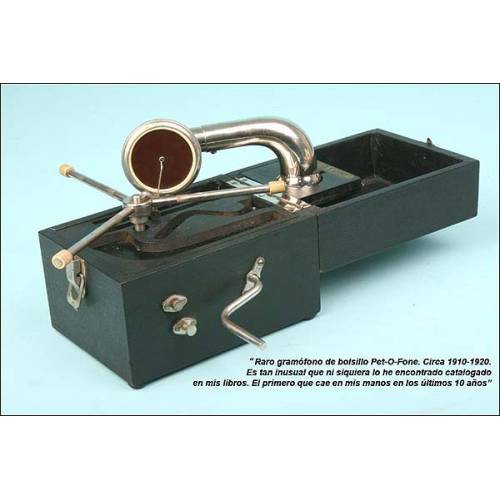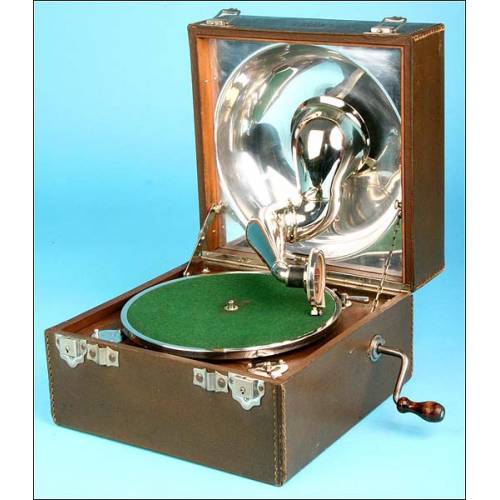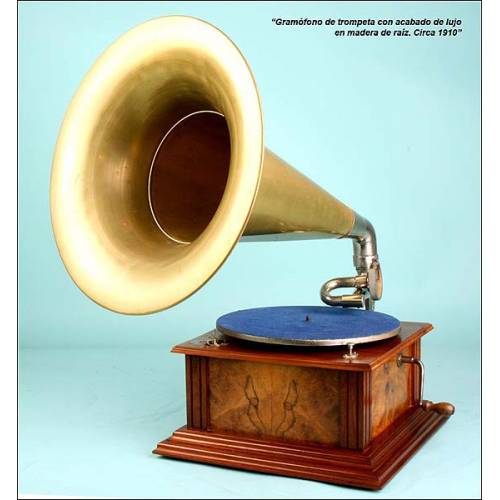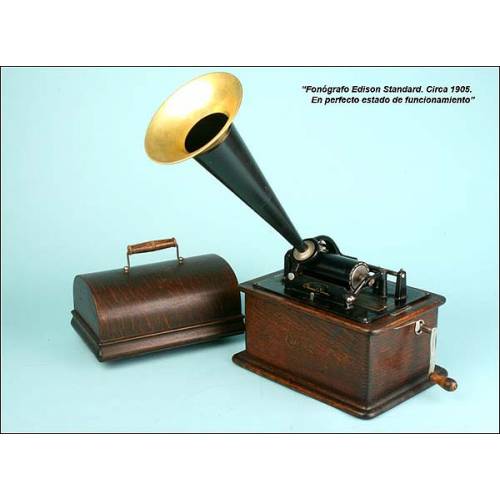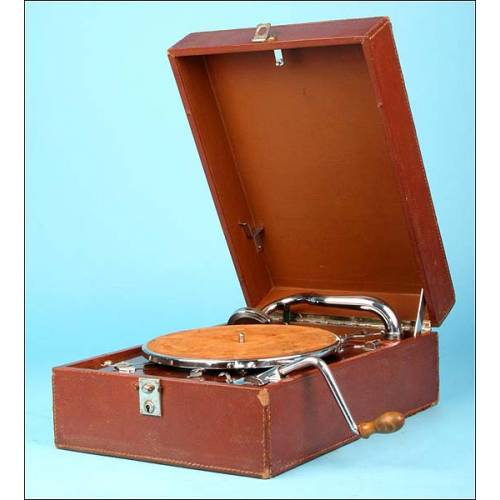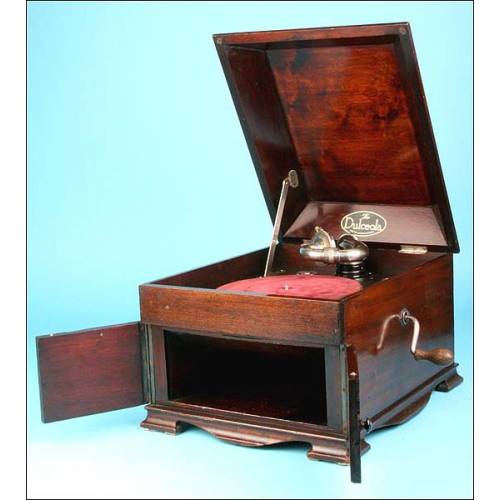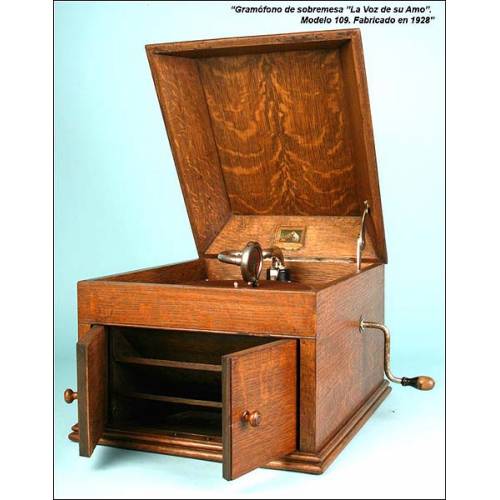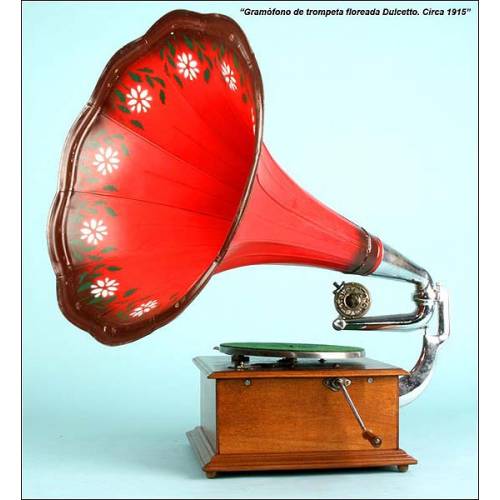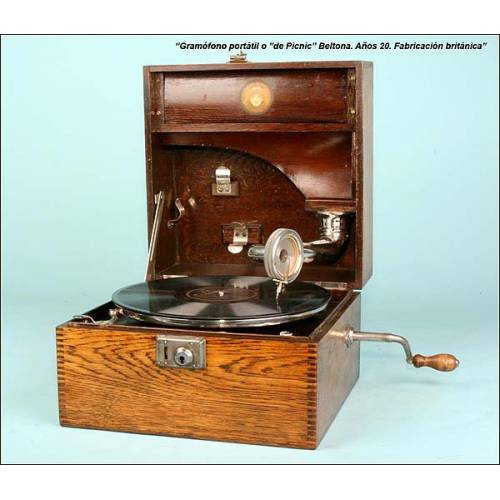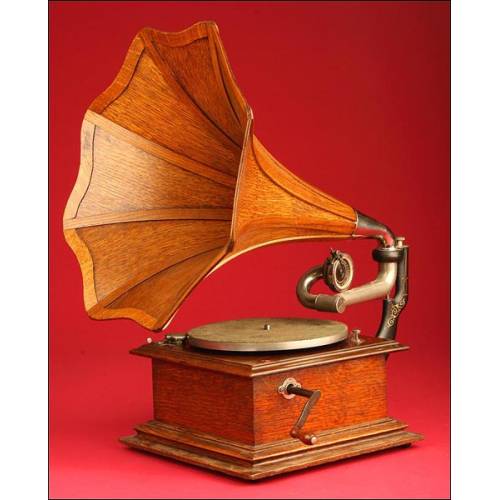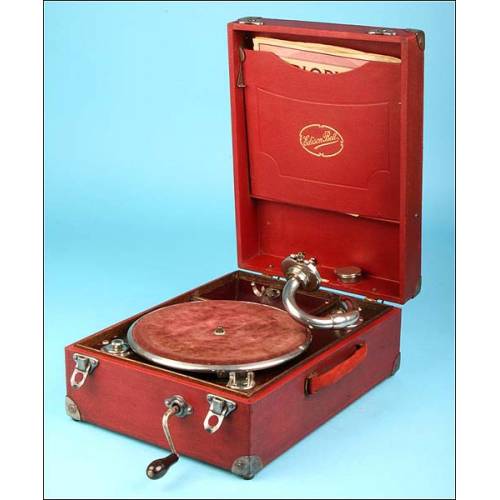C-419
Antique Spanish His Master's Voice Gramophone Model 5. Circa 1920.
Magnificent antique gramophone His Master's Voice Model 5. Wooden box with marquetry and spectacular enameled metal horn. Working wonderfully.
Sold!
Awesome antique His Master's Voice gramophone model 5, made in Spain circa 1920 and in excellent condition. The box and the horn have been thoroughly restored; the enameled finish that covers this part is fully original, showing only slight restorations very well performed. The gramophones motor has been cleaned and overhauled, so today it works really fine. The box is made of solid mahogany wood; the side panels are decorated with marquetry details made of mahogany and burl wood. The wood is protected by a lovely artisanal French-polish finish that provides it with a warm glow. The original brand decals remain in great condition too. Among them, the extremely rare front decal stands out. It is a fine circular medal with a shield inside and an inscription indicating that the manufacturer (Cia. Francesa del Gramophone) was a provider of the Royal House. In another side panel we can see the classic logo depicting a dog listening to a gramophone, with the inscription GRAMOPHONE BARCELONA PATENTADO. Finally, the horn bears another decal with the dog scene. All the gramophones component parts and pieces are original from the time except for the felt piece that covers the turntable, which is an exact reproduction of the original felt. The arm that holds the reproducer and the elbow that connects it to the box and the horn preserve the amazing original chrome-plated finish in superb condition. Engraved at the boxs edge we can see the serial number 30629. Gorgeous and fully original, this wonderful antique His Master's Voice Spanish gramophone will stand out in a living room, library or study. Measurements: Box: Side: 14.37 in / 36.5 cm. Height: 7.48 in / 19 cm. Horn: Length: 26.77 in / 68 cm. Mouths Width: 22.44 in / 57 cm.History of His Masters Voice Inside the cover we find the famous brand logo with the inscription HIS MASTERS VOICE clearly printed in golden lettering. The brand was created in 1899 from a picture by Francis Barraud depicting the dog Nipper listening to his dead owners voice coming from a phonograph. The Gramophone Company bought the picture, but before they told Barraud to change the phonograph for a gramophone of their own. The rest is history: the image became worldly famous and the firm eventually changed its company name for the brand name. The Gramophone Company, based in the United Kingdom, was one of the early recording companies. The company was merged with the Columbia Graphophone Company in 1931 to form Electric and Musical Industries Limited (EMI).

